DOH Medicaid Update May 2006 Vol. 21, No. 5
Office of Medicaid Management
DOH Medicaid Update
May 2006 Vol. 21, No. 5
State of New York
George E. Pataki, Governor
Department of Health
Antonia C. Novello, M.D., M.P.H., Dr. P.H.
Commissioner
Medicaid Update
is a monthly publication of the
New York State Department of Health,
Office of Medicaid Management
Brian Wing, Deputy Commissioner
Table of Contents
New Phone Number for Health Insurance Information Counseling and Assistance Program (HIICAP)
Letter from the Commissioner of Health
The Medicaid Preferred Drug Program is Coming this Summer
Did You Know?
New Official NYS Prescription Law Now in Effect
Documentation Requirements for Ordered Services
Provider Manual Updates
Personal Hygiene Products are not Medical Surgical Supplies
Seminar Schedule and Registration
Enrollment and Coverage for Newborns
Adjustments of Multiple Line Claims
May is Asthma Awareness Month
Provider Services
Medicare Part D
Update
Guidance for
Prescribers and Pharmacists on
Part B vs. Part D Drugs
Return to Table of Contents
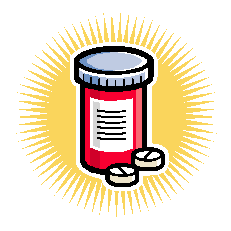
On February 17, 2006 the Centers for Medicare and Medicaid Services (CMS) sent letters to specialty groups recommending that prescribers include additional information on prescriptions that may help Part D plans and pharmacists differentiate between those drugs filled by pharmacies that may qualify as Part D drugs and those which may qualify as Part B drugs.
Please consider this guidance when prescribing or dispensing drugs to your Medicare patient.
Prescribers: Plans may rely on information you provide on the prescription, such as diagnosis or location of administration, in order to facilitate coverage determination.
As an example, Methotrexate for rheumatoid arthritis should have the diagnosis specified and the designation "Part D" added to the prescription.
Pharmacists: Plans may rely on the pharmacist's report of appropriate information to make the coverage determination under Part D, which may include the information provided by the prescriber.
On February 17, 2006 CMS issued the following guidance to prescribers on this topic:
In order to simplify access to the Part D drug benefit in the outpatient setting, we are recommending that certain steps be taken by providers to clearly differentiate those drugs filled by retail pharmacies, which may qualify as Part B drugs and those which may qualify as Part D drugs. At this time, Part B covers the oral anti-cancer, oral anti-emetic, and immunosuppressive drugs listed below under certain circumstances. This does not represent an exhaustive list of Part B covered drugs. It is possible for the list of drugs covered by Part B to change over time.
I. Drugs administered through a Part B covered item of durable medical equipment (DME) such as a nebulizer or pump.
- Medicare Part B only covers the above categories of drugs when used in conjunction with durable medical equipment in the patient's home. For those long-term care facilities that do not qualify as a patient's home, we recommend, for the above categories of drugs, including in the written order both the diagnosis and indication for the drug, as well as a statement of status, such as "Nursing Home Part D". See the website listed at the end of this letter for more information regarding the definition of a home.
II. Certain Infusion and Injectable Drugs
- In addition, Medicare Part B covers injectable and infusible drugs that are not usually self-administered and that are furnished coincident to a physician's service. If a long-term care facility (rather than a physician) administers these drugs to a non Part A patient, the drug is not covered under Part B because it is not administered coincident to a physician's service. In this situation, we recommend including a statement of status such as "Administered by facility, Nursing Home Part D".
III. Immunosuppressive Drugs for Transplants Paid for by Medicare
- Cyclophosphamide-Oral
- Cyclosporine-Oral
- Cyclosporine-Parenteral
- Daclizumab-Parenteral
- Lymphocyte Immune Globulin,
- Antithymocyte Globulin-Parenteral
- Methotrexate-Oral
- Methylprednisolone-Oral
- Methylprednisolone Sodium
- Succinate Injection
- Muromonab-Cd3-Parenteral
- Mycophenolate Acid-Oral
- Mycophenolate Mofetil-Oral
- Oral Azathioprine
- Parenteral Azathioprine
- Prednisolone-Oral
- Prednisone-Oral
- Sirolimus-Oral
- Tacrolimus-Oral
- Tacrolimus-Parenteral
V. Oral Anti-cancer Drugs
- Busulfan Capecitabine
- Cyclophosphamide
- Etoposide
- Melphalan
- Methotrexate
- Temozolomide
V. Oral anti-emetics Prescribed for use within 48-hours of Chemotherapy Except as Noted Below:
- 3 Oral Drug Combination of: (1) Aprepitant; (2) A 5-HT3 Antagonist (Q0166, Q0179, Q0180); and (3) Dexamethasone
- Chlorpromazine Hydrochloride
- Diphenhydramine Hydrochloride
- Dolasetron Mesylate (Q0180) (Within 24 Hours)
- Dronabinol
- Granisetron Hydrochloride (Q0166) (Within 24 Hours)
- Hydroxyzine Pamoate
- Ondansetron Hydrochloride (Q0179)
- Perphenazine
- Prochlorperazine Maleate
- Promethazine Hydrochloride
- Thiethylperazine Maleate
- Trimethobenzamide Hydrochloride
For these drugs we recommend including in the written prescription, the diagnosis and the indication as well as the statement of status as "Part B" (for above indications) or "Part D" (for all other indications). As an example, Methotrexate for rheumatoid arthritis should have the diagnosis specified, and the designation "Part D" added to the prescription.
While this guidance does not guarantee payment or coverage, following the process may help pharmacists respond more readily to additional information to support Part D or Part B coverage and facilitate appropriate processing by the plan. We also note that this correspondence does not supersede any existing guidance concerning documentation for Part B prescriptions.
For more detailed information on Part B vs. Part D coverage, see the following website:
http://www.cms.hhs.gov/PrescriptionDrugCovGenIn/Downloads/PartBandPartDdoc_07.27.05.pdf
Medicare Part D
Update
NEW PHONE NUMBER
Return to Table of Contents
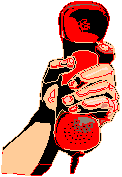
Please note that the contact information for the Health Insurance Information Counseling and Assistance Program (HIICAP) has changed to:
1-800-701-0501
Medicare recipients may contact HIICAP for free personalized health insurance counseling, Monday through Friday 8:00 a.m. to 5:00 p.m.
Medicare Part D
Update
Letter from the
Commissioner of Health
Return to Table of Contents
The following communication from Dr. Antonia Novello, the New York State Commissioner of Health, is an excerpt from a letter that was sent to all Medicaid prescribers regarding their role in the Medicare Part D prescription drug program. Your continued assistance in helping Medicare/Medicaid dual benefit recipients receive their necessary medications from their Medicare drug plans is very much appreciated.
March 29, 2006
Dear Prescriber:
This letter contains important information about the Medicare Part D Prescription Drug Program, Medicaid, and its impact on your patients with both Medicaid and Medicare (dual eligibles). As you are aware, the responsibility for providing pharmacy benefits for this group was transferred from Medicaid to Medicare Part D, as required by federal law, on January 1, 2006.
All Part D plans have some limits on prescription coverage, but they also are required to have exception and appeal procedures which assure access to medically necessary medications, even if they are not on the formulary, or subject to some restrictions such as step therapy. When your patient is unable to get a necessary medication covered under their Part D plan, the prescriber has several choices, including changing the prescription to drugs covered under the plan, assisting the patient to change plans, or pursuing an exception request.
I would like to personally request your assistance in undertaking the efforts necessary to make sure that, when appropriate, exception requests are pursued by your office. It is of utmost importance that prescribers take these actions, and follow the Part D plans' procedures, in order to assure that their patients receive the appropriate medication. We understand the additional burden these actions place on you and your staff, however, without your intervention, pharmacies are unable to process prescriptions for your patients when the drug is non-formulary, or requires prior authorization.
We also recognize the initial difficulties encountered with trying to complete these procedures. However, Part D plans are showing significant improvement in the ability to respond and process exception requests. Enclosed is a list of the special contact numbers now established for prescribers to request exceptions and appeals from each of the benchmark plans to which NYS duals have been assigned. Note: these numbers are designed specifically for exceptions and appeals; general plan inquiries should still be directed to the standard contact numbers for each plan.
Also enclosed is a recent publication from the Centers for Medicare and Medicaid which provides general assistance for prescribers with the new Part D benefit.
Thank you for your assistance and special efforts on behalf of your patients during this difficult and sometimes confusing transition period. Your continued assistance is sincerely appreciated.
Sincerely,

Antonia C. Novello, M.D., M.P.H., Dr. P.H.
Commissioner of Health
Enclosures
Medicare Part D
Update
Provider Resource for the
Exception/Appeal Process
Return to Table of Contents
Information is provided here to help providers understand and navigate the Part D plan's exception/appeals processes. It summarizes Part D covered items, definitions and the exception and appeal process.
Physician Part D Resource Fact Sheet (PDF, 267KB, 2 pg)
| Contact Information for Prescribers: Medicare Part D Listed below are contact numbers for the Medicare Part D benchmark Prescription Drug Plans (PDP) in NYS. Prescribers may request an exception when the patient's drug is not covered by the prescription plan. Contact information was updated on 3/15/06 | |
|---|---|
| American Progressive Insurance Co. Prescription Pathway Bronze Plan Reg 3 http://www.rxpathway.com/ Recipient customer service 800-766-3233 Pharmacists & prescribers 800-698-8394 Exceptions 888-862-2699 ext. 6101 |
Pacificare Insurance Company Pacificare Saver & Pacificare Select Plan https://www.prescriptionsolutions.com/ Recipients, pharmacists & prescribers can call 800-797-9794 Exceptions 800-711-4555 |
| Excellus Health Plan, Inc. Simply Prescriptions https://www.excellusbcbs.com/ Recipient customer service 800-514-6930 Pharmacists & prescribers 800-724-5033 Exceptions 800-724-5033 |
First Health First Health Premier https://www.firsthealthpremier.com/ Recipient customer service 888-975-8989 Pharmacists & prescribers 800-421-2342 |
| Unicare (Anthem) Medicare Rx Rewards https://www.unicare.com Recipient customer service 800-928-6201 Pharmacists & prescribers 800-662-0210 Exceptions 800-662-0210 | |
| Group Health Incorporated (GHI) GHI Medicare Prescription Drug Plan https://www.ghi.com/ Recipient customer service 866-557-7300 Pharmacists 800-824-0898 Exceptions 800-417-8164 |
United Healthcare Insurance Co of NY United HealthRx https://www.unitedhealthrx.net Recipient customer service 866-255-4515 Pharmacists & prescribers 888-492-2949 Exceptions 888-492-2971 |
| Health Net Insurance of NY Health Net Orange https://www.healthnet.com Recipient customer service 800-806-8811 Prescribers 800-867-6564 Pharmacists help desk 800-693-8951 Exceptions 800-533-0921 |
United Healthcare Insurance Co of NY AARP MedicareRx Plan https://www.AARPMedicareRx.com/ Recipient customer service 866-255-4515 Pharmacists & prescribers 888-492-2952 Exceptions 888-492-2971 |
| Humana Insurance Company of NY Humana PDP Standard https://www.humanamedicare.com Recipient customer service 800-281-6918 Pharmacists & prescribers 800-448-6262 Pharmacy help desk 800-865-8715 or 800-555-2546 Exceptions 800-555-2546 |
United Healthcare Insurance Co of NY United Medicare MedAdvance https://www.unitedmedicareadvance.com/ Recipient customer service 866-255-4515 Pharmacists & prescribers 888-747-5736 Exceptions 888-492-2971 |
| Wellcare Health Plans Wellcare Signature https://www.wellcare.com/medicare/ Customer service for recipients, pharmacists & prescribers 888-550-5252 or 800-278-5155 Exceptions 866-800-6111 | |

Attention
Prescribers and
Pharmacists
The Medicaid Preferred
Drug Program Is Coming
This Summer!
Return to Table of Contents
The Preferred Drug Program
On April 1, 2005, legislation was passed which requires that the Medicaid program implement a Preferred Drug Program. This new program promotes the prescribing of less expensive, equally effective prescription drugs when medically appropriate. The legislation provides a number of protections for consumers and prescribers to assure that all medically necessary drugs are available. Non-preferred drugs in those drug classes where a preferred drug has been identified will require prior authorization.
Implementation
Implementation will occur in phases, with groups of drugs being added to the preferred drug list as therapeutic classes or drugs are reviewed. The initial set of categories of drugs will be implemented during late June 2006.
All providers will be given detailed information and guidelines on the new program prior to its implementation. The NYS Medicaid Preferred Drug List will be widely distributed, and available on the Department's web site, prior to implementation.
Identification of Preferred Drugs
The development of the Preferred Drug List is based on recommendations made to the Commissioner of Health by the Medicaid Pharmacy and Therapeutics (P&T) Committee. The P&T Committee consists of actively practicing medical professionals as well as consumer advocates.
The P&T Committee reviews the clinical effectiveness and safety of drugs using the latest peer-reviewed research and studies from a variety of clinical sources. The Committee meets in a public forum where interested parties are given an opportunity to comment on agenda items. Recommendations of the Committee are forwarded to the Commissioner of Health, who makes a final determination as to what drugs will be identified as preferred. Some drugs in a class will be identified as preferred because of their unique characteristics. Other drugs will be identified as preferred because they are considered equally effective and are less expensive. Non-preferred drugs will require prior authorization.
Not all classes of drugs are chosen for inclusion within the Preferred Drug Program. Those classes not chosen will be treated in the same manner as they are currently handled by the New York Medicaid program. There will be no change in policy for drug classes which have not been reviewed for the Preferred Drug Program. Please note that all medications covered under the Medicaid program will continue to be available to Medicaid recipients.
Information on when the P&T Committee will meet and which drug classes will be reviewed can be found at: http://www.health.state.ny.us/health_care/medicaid/program/ptcommittee
Exempted Drug Classes
The following drug classes are exempt from the Preferred Drug Program:
- Atypical anti-psychotics
- Anti-depressants
- Anti-retrovirals used in the treatment of HIV/AIDS
- Anti-rejection drugs used for the treatment of organ and tissue transplants
- Any other therapeutic class for the treatment of mental illness or HIV/AIDS recommended by the Medicaid P&T Committee and approved by the Commissioner of Health.
Prior Authorization (PA)
In situations where a prescriber determines that a non-preferred drug is the most appropriate choice for their patient, the prescriber can request a prior-authorization for Medicaid coverage of their patient's drug. First Health Services Corporation has been contracted to assist New York's Medicaid program in implementing the Preferred Drug Program. A phone and fax process will be established, with the assistance of First Health Services, which will provide timely access, and a high quality of operations, related to the prior authorization process. The prescriber will be asked standardized questions to receive approval of prior authorization. When a prior authorization is approved, the PA number will need to be written on the prescription in order to assure payment by Medicaid.
More Information
Additional information about this new program will be provided in upcoming Medicaid Update articles, provider mailings and can also be accessed through the Department website at www.health.state.ny.us or through First Health Services Corporation at http://newyork.fhsc.com.
Questions? Please call Pharmacy Policy and Operations staff at:
(518) 486-3209.
Approximately 11% of all Medicaid eligibles are 65 and older
while approximately 43% of all Medicaid eligibles are under age 21 .
Source: OMM/DOH DataMart 4/06 All Eligibles Data from 10/05

New Official New York State
Prescription Law Now In Effect
Return to Table of Contents
The new Public Health Law designed to combat prescription fraud went into full effect on April 19, 2006, when all prescriptions written in New York State -for both controlled and non-controlled substances-must be written on an official New York State prescription.
- All practitioners must register with the Department's Official Prescription Program to receive official prescriptions free of charge.
- If you have not yet registered for this new program, you may obtain a registration packet by calling the Official Prescription Program toll free at (866) 772-4683.
- New York State hospitals, and their affiliated clinics, are exempt from the requirement for their staff practitioners to prescribe on official prescriptions until April 19, 2007. The exemption applies only to the prescribing of non-controlled substances.
- Official prescriptions generated by practitioners using printers in an electronic medical record system (EMR) will contain a variety of different formats and fonts. All are valid for dispensing if they contain all information required by New York law.
- As of April 19, 2006, pharmacists may fill non-official prescriptions from New York State practitioners for non-controlled substances until October 19, 2006.
- The pharmacist must also notify the Official Prescription Program of the prescribing practitioner so he/she may be issued official prescriptions for subsequent prescribing by calling (866) 811-7957.
- Pharmacists may continue to fill non-official prescriptions issued by out-of-state practitioners if the prescriptions contain all information required by New York State law.
Questions regarding the new program may be directed to the Official Prescription Program at:
(866) 811-7957 or by e-mail at narcotic@health.state.ny.us.
Information regarding the program may be found on the web at:
http://www.health.state.ny.us/professionals/narcotic.

Documentation Requirements for
Ordered Services
Return to Table of Contents
Ordering Providers and Practitioners
Medicaid requires that the patient's medical record contain documentation of (in the practitioner's best professional judgment) medical necessity supporting the ordering and provision of all services.
This includes a clinical evaluation(s) of the patient by the ordering practitioner relating to the ordered service and additional documentation from other licensed healthcare professionals which supports the medical necessity of the ordered service.
Providers of Ordered Services
Only licensed healthcare professionals can evaluate and document the medical need for ordered services reimbursed by Medicaid. In certain circumstances, providers may be instructed to collect and maintain this documentation from the ordering practitioner and other licensed healthcare professionals in their files, and provide it to the Department upon request.
All Providers
Providers are responsible for assuring that adequate and less costly alternatives for services have been explored and, where appropriate and cost effective, are provided.
In addition, Department regulations (18 NYCRR 515.2) state that it is an unacceptable practice to order or furnish inappropriate, improper, unnecessary or excessive services. Providers engaging in unacceptable practices are subject to liability for overpayments or penalties and administrative action that could affect their continued participation in the Medicaid program.
Attention
Fee-for-Service
Providers
Provider Manual
Updates
Return to Table of Contents
Please visit the eMedNY website often at:
http://www.emedny.org/ProviderManuals/index.html
for updates to your provider manual!
The provider manual section of the website is updated frequently with information regarding billing policy and procedure codes/fee schedules. Also, the provider communication link in the provider manual section contains important provider letters and notifications. Utilizing this information is an essential resource for accurate and timely Medicaid claims submission and payment.
Attention
Pharmacy
&
DME
Providers
Personal Hygiene Products
Are Not
Medical-Surgical Supplies
Return to Table of Contents
Fee-for-service Medicaid does not cover personal hygiene products such as:
- disposable toothbrushes (aka "toothettes"),
- disposable washcloths (aka "baby wipes"), and
- menstrual pads.
Audits have uncovered instances where providers have incorrectly billed the Medicaid program for these products using medical-surgical supply procedure codes which describe ostomy skin barrier wipes, urinary incontinence pads or medical products.
The medical-surgical supply procedure codes billed do not describe the personal hygiene products dispensed.
Billing Medicaid for personal hygiene products in this manner is considered an improper practice under Department Regulations Title 18 NYCRR 515.2. Providers engaging in improper practices are subject to liability for overpayments or penalties, administrative action that could effect their continued participation in the Medicaid program, and/or criminal prosecution.
For questions on covered procedure codes and services, please contact,
The Division of Medical Review and Provider Enrollment at
518-474-8161.
For questions on improper practices and/or administrative actions, please contact
The Office of the Medicaid Inspector General at:
(518) 402-0075
Seminar Schedule and Registration
Return to Table of Contents

Computer Sciences Corporation (CSC) announces a schedule of seminars to be offered to providers and their billing staff.
Seminar locations and dates are available at the eMedNY website. Registration is fast and easy.
Go to http://www.emedny.org/training/index.aspx to register for the eMedNY Training Seminar appropriate for your provider category and location.
If you are unable to access the internet to register, please contact CSC's call center at (800) 343-9000, to obtain a registration form.
You may also request seminar schedule and registration information by contacting CSC's Fax on Demand at (800) 370-5809. Please refer to these resources frequently for additional seminar offerings.
CSC representatives look forward to meeting with you at upcoming seminars!
Hospital
Reporting
Mandate!
Enrollment and Coverage
for Newborns
Return to Table of Contents
On August 9, 1999, Governor Pataki signed legislation (Chapter 412 of the Laws of 1999) requiring that the Department of Health (Department) ensure the timely enrollment of infants, whose mothers are in receipt of Medicaid, into the Medicaid program. The statute took effect July 1, 2000. This statute mandates that hospitals report live births for women in receipt of:
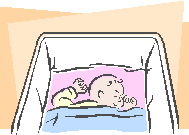
- Medicaid;
- Family Health Plus; and the
- Prenatal Care Assistance Program;
to the Department, or its designee, within five (5) business days of the birth.
Furthermore, New York State Public Health Law, Section 4130.5, states that when a birth occurs in a hospital, the person in charge of such hospital or his designated representative shall obtain the personal data, prepare the certificate, secure the signatures required by the certificate, and file it with the registrar. The physician in attendance or a physician acting on his behalf shall certify to the facts of birth and provide the medical information required by the certificate within five days after birth. This applies to all births in New York State.
Hospitals may face a financial penalty if they fail to comply with this provision.
The Department will be issuing Statements of Deficiencies to late and non-reporting hospitals as a pre-cursor to financial penalties of $3,500 per instance of noncompliance.
Hospitals are required to comply with the following:
- The hospital must confirm that a mother presenting a Common Benefit Identification Card (CBIC) is actually Medicaid eligible. The CBIC card is also used for people who are eligible for other programs such as Food Stamps.
The verification process through the Medicaid Eligibility Verification System (MEVS) must be completed to determine the recipient's eligibility for Medicaid services and supplies. When a provider does not verify eligibility prior to providing services, there is a risk of nonpayment for those services.
Please note that hospitals are still required to report births of babies born to women with pending Medicaid coverage. - The birth hospital must report even if the infant is transferred soon after the birth.
When a newborn is transferred to another medical facility, it remains the responsibility of the hospital where the birth occurred to report the birth within the required timeframes to ensure medical coverage of the newborn. - Providers must also check the mother's Medicaid managed care status since many managed care plans serve Medicaid as well as non-Medicaid enrollees.
Health Plan member identification cards issued after 10/1/04 include the Client Identification Number (CIN) for persons in receipt of Medicaid or Family Health Plus. In most instances, an infant born to a woman who is enrolled in a managed care plan is considered enrolled in the same plan from date of birth, even if the managed care enrollment is not yet reflected on the system. Providers must not bill Medicaid fee-for-service, but rather must bill the managed care plan for the infant's hospital stay. Babies weighing less than 1200 grams at birth will not be enrolled in a managed care health plan.
In New York State, an infant whose mother is in receipt of Medicaid at the time of the infant's birth is entitled to Medicaid for at least the first 12 months from the date of birth. Therefore, if a woman with an infant in need of care presents with her active Medicaid card, providers should assume that the child is also eligible even though the child may not yet have a Medicaid card.
Past issues of the Medicaid Update have addressed these topics and can be accessed online by clicking the following links:
October 1999, July 2000, December 2001, June 2003, October 2003, and April 2005
The Department continues to strive for 100% compliance in reporting newborns and ensuring medical coverage for these newborns and remains committed to assisting facilities in fulfilling their reporting responsibilities so that all eligible infants have access to medical care in New York State.
Thank you for your assistance in ensuring that newborns receive quality care while their formal Medicaid eligibility is processed.
Attention
Providers of
Nursing
Services
Adjustments of Multiple Line Claims
Return to Table of Contents
When submitting a claim as an adjustment, the Transaction Control Number (TCN) of the previously paid claim must be entered on the new claim being submitted as an adjustment.
The TCN is assigned to the entire document, and that one TCN represents all the claim lines on that claim.
If the claim to be adjusted was paid and contained more than one claim line, then all the paid claim lines for that TCN must be on the adjustment. Any lines left off will be voided from the claim.
Example: a single claim is submitted with four (4) lines, with each line indicating eight (8) hours of service. The claim is processed and all four (4) lines are paid as billed under one TCN. If submitter then determines that the hours on one of the claim lines were incorrect, an adjustment may be submitted. The adjustment would show the same four (4) lines as on the original, but the line being corrected would show the new hours of service.
Complete instructions can be found beginning on Page 10 of the Nursing Services Provider Manual. The manual is available free of charge on the http://www.emedny.org website.
Questions? Please contact Computer Sciences Corporation at:
(800) 343-9000
Attention
Providers of
Nursing
Services
May is
Asthma Awareness Month
Return to Table of Contents
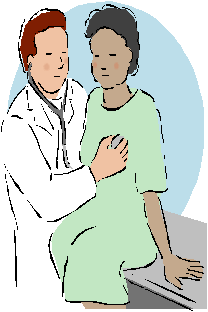
The Medicaid program encourages practitioners to copy and distribute the following information to their patients and to share them with their colleagues.
What is Asthma?
Asthma is a serious, life threatening, chronic disease which affects both adults and children in New York State.
Between the years 2000-2002, asthma caused an average of 338 deaths PER YEAR, 17 of those were in children between the ages of 0-14.
Asthma is a respiratory disease that can affect one's ability to breathe. The airways of the lungs become inflamed which make the lungs sensitive and causes them to react strongly to things which you are allergic or find irritating.
When the lungs become irritated, it may cause an asthma attack, which is when the muscles around the airway tighten up which makes it very difficult to breathe. Though asthma cannot be cured, it can be controlled. Knowing the signs and symptoms, staying away from irritants that trigger asthma, taking medications as prescribed and talking with your doctor can help to minimize symptoms.
What are the Signs and Symptoms of Asthma?
- Coughing - often worse at night or early in the morning.
- Wheezing - a whistling with breathing.
- Shortness of Breath - difficulty getting air in and out of the lungs.
- Chest Tightness - feeling of heaviness on the chest.

What are Asthma "triggers"?

Asthma may be "triggered" by things that irritate the lungs, which can be found indoors and outdoors. It is important to be aware of your environment. These irritants are referred to as asthma "triggers". The most common are:

- Allergens - pollen, mold, dust mites and house dust, pollution, cockroaches and other pests, and pets (animal dander).
- Air pollution - cigarette smoke, environmental fumes.

- Irritants - perfume, flowers, cleaning supplies, paints, any strong odor, and fumes.

- Weather - particularly wind and cold air.
- Exercise - with overexertion and in cold air.
- Illness - common cold, respiratory illnesses.

If I Have Asthma, What Can I Do?
Asthma can be controlled by taking some simple steps. Talk with your doctor and set up an asthma plan that works for you. Learn what you can do to reduce your chances of having an asthma attack. Together you and your physician can determine triggers and how to avoid them, discuss the best medications to treat your asthma and the importance of regular follow up and monitoring.
For more information on Asthma, please visit the following websites:
NYS Department of Health
http://www.health.state.ny.us/diseases/asthma/index.htm
U.S. Environmental Protection Agency
http://www.epa.gov/iaq/asthma/about.html
American Lung Association
The Medicaid Program reimburses for medically necessary care, services, and supplies needed in the diagnosis and treatment of Asthma.
Sources adapted from:
NYS DOH, Asthma overview, http://www.health.state.ny.us/diseases/asthma/index.htm
U.S. EPA, Asthma & Indoor Environment, http://www.epa.gov/iaq/asthma/about.html
For information regarding Medicaid payment of these services, please contact the Bureau of Program Guidance at:(518) 474-9219.
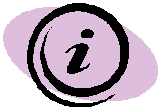
PROVIDER SERVICES
Return to Table of Contents
Missing Issues?
The Medicaid Update, now indexed by subject area, can be accessed online at the New York State Department of Health website:
http://www.health_care/medicaid/program/update/main.htm
Hard copies can be obtained upon request by emailing: MedicaidUpdate@health.state.ny.us or by calling (518) 474-9219.
Do You Suspect Fraud?
If you suspect that a recipient or a provider has engaged in fraudulent activities, please call the fraud hotline at: 1-877-87FRAUD. Your call will remain confidential.
As a Pharmacist, Where Can I Access the List of Medicaid Reimbursable Drugs?
The list of Medicaid reimbursable drugs is available at: http://www.eMedNY.org/info/formfile.html
Questions About an Article?
For your convenience each article contains a contact number for further information, questions or comments.
Do You Want Information On Patient Educational Tools and Medicaid's Disease Management Initiatives?
Contact Department staff at (518) 474-9219.
Questions About HIPAA?
Please contact CSC Provider Services at (800) 343-9000.
Address Change?
Questions should be directed to CSC at (800) 343-900, option 5.
Patient Eligibility
Call the Touchtone Telephone Verification System (800) 997-1111, (800) 225-3040 or (800) 343-9000.
Fee-for-service Provider Enrollment
A change of address form is available at:
http://www.emedny.org/info/ProviderEnrollment/Provider%20Maintenance%20Forms/6101-Address%20Change%20Form.pdf.
Rate-based/Institutional Provider Enrollment
A change of address form is available at:
http://www.emedny.org/info/ProviderEnrollment/Provider%20Maintenance%20Forms/6106-Rate%20Based%20Change%20of%20Address%20Form.pdf
Billing Question? Call Computer Sciences Corporation:
Provider Services (800) 343-9000.
Comments and Suggestions Regarding This Publication?
Please contact the editor, Timothy Perry-Coon at MedicaidUpdate@health.state.ny.us or via telephone at (518) 474-9219 with your concerns.
The Medicaid Update: Your Window Into The Medicaid Program
The State Department of Health welcomes your comments or suggestions regarding the Medicaid Update.
Please send suggestions to the editor, Timothy Perry-Coon:
NYS Department of Health
Office of Medicaid Management
Bureau of Program Guidance
99 Washington Ave., Suite 720
Albany, NY 12210
(e-mail MedicaidUpdate@health.state.ny.us)
The Medicaid Update, along with past issues of the Medicaid Update, can be accessed online at the New York State Department of Health web site:http://www.health_care/medicaid/program/update/main.htm
